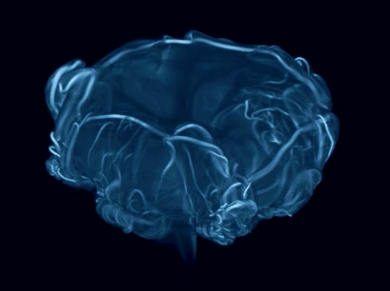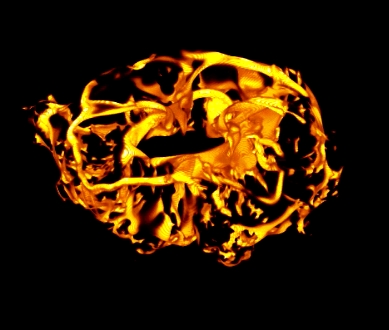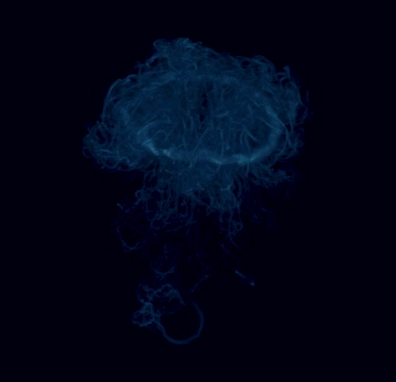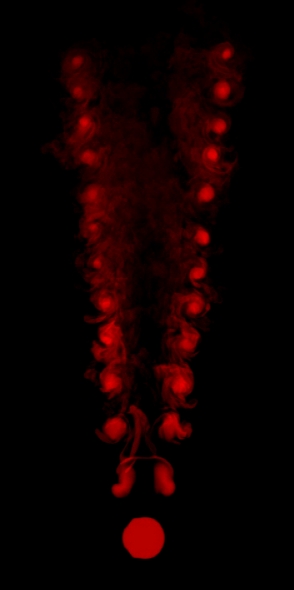
Home |
Research |
Publications |
People |
BoxLib |
Links |
Downloads |
Buoyant Burning Bubbles in Type Ia Supernovae
Introduction
Flame ignition in type Ia supernovae (SNe Ia) leads to isolated bubbles of burning buoyant fluid. As a bubble rises due to gravity, it becomes deformed by shear instabilities and transitions to turbulent evolution.
Morton, Taylor and Turner (1956) introduced the entrainment assumption for inert thermals. In the present paper, we use the entrainment assumption, suitably modified to account for burning, to predict the late-time asymptotic behavior of thermals in SNe Ia, and compare with three-dimensional simulations.
Simulations
Here we present two simulations of buoyant bubbles in conditions similar to that of a type Ia supernova. One of the simulations is burning carbon to magnesium, and the other is an inert control for comparison with the original theory of Morton, Taylor and Turner (1956).

|
This is the same image and movie as above, but just showing the vorticity field. Click the image to animate. If you have trouble with the animation, right click and save the movie. |
|
This is the same image and movie as above, but just showing the burning rate. Click the image to animate. If you have trouble with the animation, right click and save the movie. |

|

|
This is a three-dimensional rendering of the vorticity field in the inert case. Click the image to animate. If you have trouble with the animation, right click and save the movie. |
Any questions should be directed to Andy Aspden.
References
B. R. Morton and G. I. Taylor and J. S. Turner. Turbulent Gravitational Convection from Maintained and Instantaneous Sources. Royal Society of London Proceedings Series A, Volume 234. (1956)

